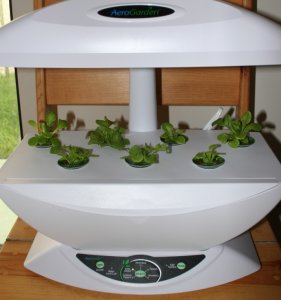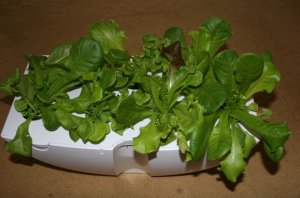by Editor | Apr 30, 2007 | Restaurants and Food
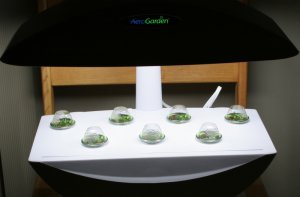
Our newly assembled AeroGarden
Ask the best chefs and they all same the same regarding quality ingredients. The secret to any gourmet dish is to start with fresh and premium products. It can’t get any fresher than growing produce at home. When we first heard about the indoor soil free hydroponics AeroGarden system we were instantly curious. If successful, the new device would allow us to grow herbs, veggies and fruits at our convenience year round without the need of a green thumb. Add to that the many benefits promised in promotional materials and we had to try it.
It was surprisingly easy to assemble the garden from the boxed components. An intense white light simulated sunlight, shining like a beacon from our kitchen and stimulating plant growth. Our kit came with everything necessary including ready to use Salad Greens pods. All it required was assembly, water and electricity.
A few days after assembly the pods began to show growth
Within days of the set up, we began to see signs of growth and soon there were salad seedlings in every container. The AeroGarden containers were watered regularly and consistently thanks to the built-in mechanism and timer. When it became necessary to replenish the water and nutrients a light at the base of the AeroGarden lit up to alert us. When the lettuce reached the “ceiling” it was time to raise the cover a notch so the light bulbs wouldn’t scorch the plant leaves.
Salad Greens were delicious and tender
The lettuce leaves were tender and delicious, unlike any supermarket produce. We enjoyed them individually as a snack and in salads as well as plain and with salad dressing. Toward the end of the growth cycle we were traveling and were not as vigilant as we should have been with the nutrient and water replacements. This seems to have caused the last of the salad greens to become bitter.
We liked the unit so much we sent one to a friend who has since made excellent use of her unit, growing several cycles of produce. Soon we plan to try out the other kits like strawberries, tomatoes, gourmet herbs, French, Italian and Japanese herbs, chili peppers, basil (with seven varieties of basil), petunias, and the Master Gardener package with eggplants, peppers, green beans, and spinach.
by Editor | Apr 16, 2007 | Products
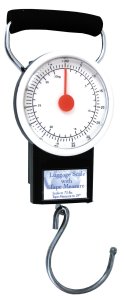
Photo: Magellan’s
A couple of week’s ago a friend was forced to leave behind $100 in champagne from her luggage at the airport in Houston, Texas. She had exceeded her luggage allowance in business class for her international flight; and although she was willing to pay extra to take the bubbly, the airline refused. She was forced to leave the bottles behind at the airport.
We have avoided that fate and excess luggage fees on more than one occasion by carrying a light weight, inexpensive ($9) and simple to use gadget, a portable luggage scale. After packing our luggage and zippering each bag, we lift it with the scale to see how much it weighs. If it exceeds our weight allowance we lighten it. We take the 8-ounce scale with 75 pound weighing capacity with us. On the return trip, when our luggage is bursting with souvenirs, we pull out the scale and repeat the operation.
Using the scale is fast and easy, especially with two of us. While one person lifts the luggage with the scale, the other observes the weight needle carefully. In order to use the scale effectively we have to be able to lift the suitcase or bag completely off the ground.
To weigh the luggage, we attach the handle of the suitcase to the scale hook and lift the cushioned handle of the scale. That means, if the suitcase weighs 50 pounds, we must be able to lift the 50-pound bag. We have used the scale and taken it with us on at least six international trips and it has worked like a charm.
Click here to purchase scale 
by Editor | Apr 2, 2007 | Accomodations, Ecotourism, New Articles
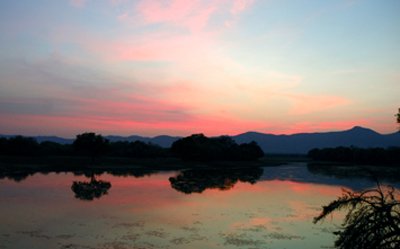
Dawn over the Nchendeni Hills
Photo: Josette King
Simon & Baker Travel Review Writer and Photographer Josette King visited the South Luangwa National Park in Zambia last fall. The park, according to experts, is home to some of the most intense concentration of game in Africa.
She particularly enjoyed her stay at several of the intimate luxury bush camps such as Chamilandu, Chindeni and Kuyenda, managed by the Bushcamp Company, one of only two companies operating within the 3,500 square mile wilderness of the park.
Each camp was ideally located to take advantage of the breathtaking vistas along the Luangwa River and its tributaries. The camps were the starting point for daily walking safaris and game drives. Click here to read more about Josette’s Luangwa Valley experience.
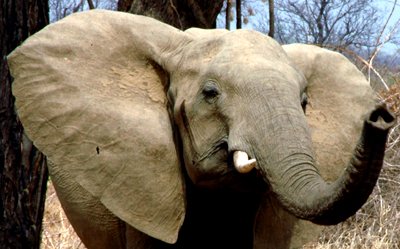
Elephants abound in the Luangwa Valley
Another property she visited in the park, Mfuwe Lodge, will be hosting a special week of “Animals in Action” November 17-24, 2007. During that week, guests will have an opportunity to join a host of internationally renowned personalities coming together at the lodge. They include Katy Payne, researcher and ground breaking expert in elephant communication from the United States); Jonathan and Angela Scott, wildlife photographers, TV presenters and authors from Kenya; Jonathan Truss, wildlife artist from the United Kingtom; and Phil Berry, world authority on giraffe from Zambia.
Derek Solomon, ornithologist and animal behavior specialist from Zambia; and Manda Chisanga, safari guide and specialist on traditional and medicinal uses of the local plants from Zambia will also be in attendance. Lodge guests that week will be able to participate in bush walks, game drives and lectures with time to interact with the guest speakers at bush breakfasts, lunches and sundowners on the banks of the river.

